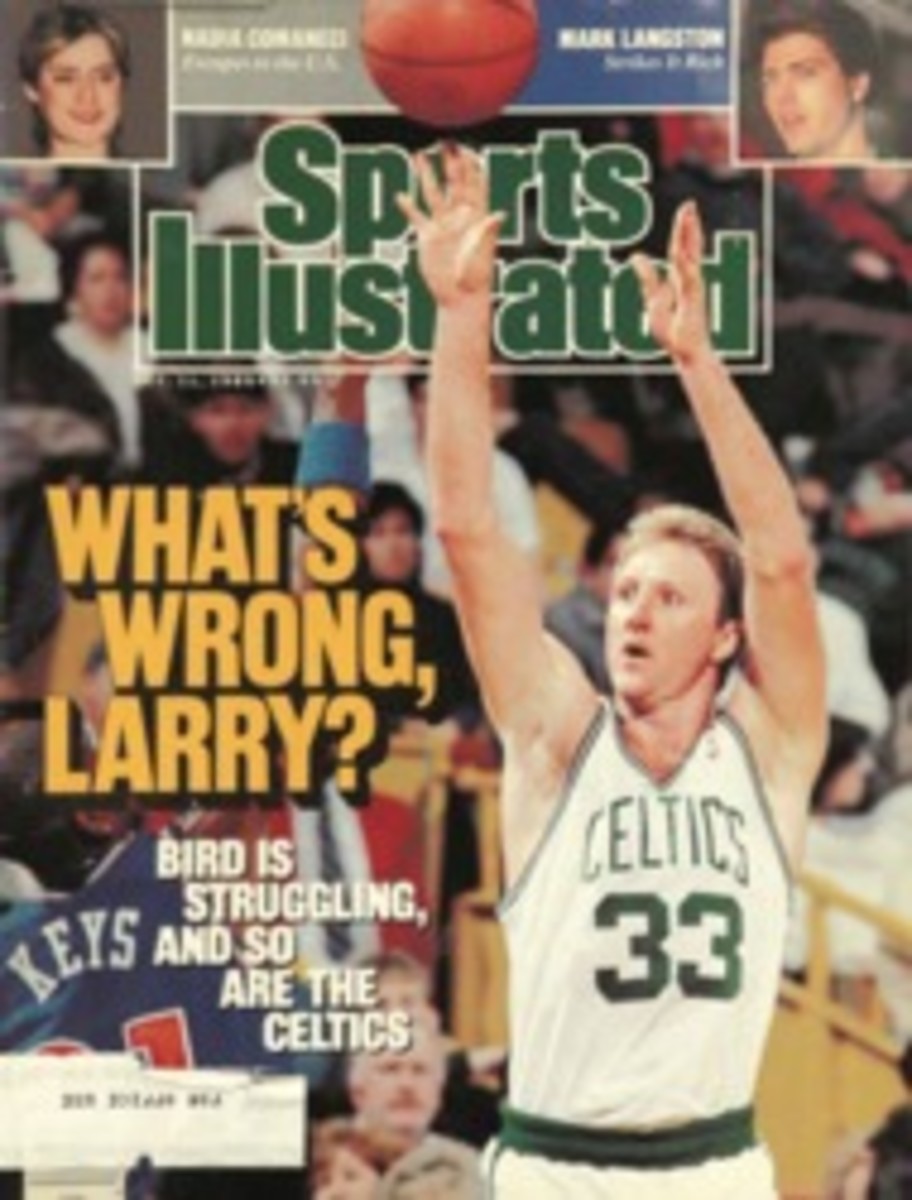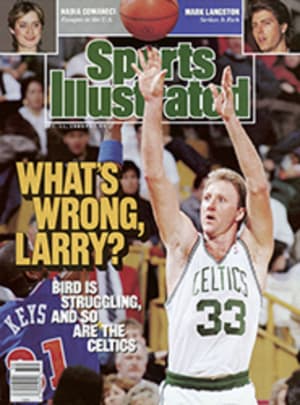
DICK TRICKLE IS NASCAR'S NEWEST GOOD OL' BOY
Last March in the middle of Dick Trickle's first NASCAR Winston Cup race this year, the Goodwrench 500, in Rockingham, N.C., his car screeched into the pits during a caution period. Two mechanics dived headfirst into Trickle's car, one through each window, flapping their legs in the air to keep their balance as they frantically made what appeared to be adjustments to the gold Buick. In fact, they were wrestling with their driver's feet. "I had a new pair of cowboy boots on," says Trickle, "and they were not broken in enough yet. So when the floorboard got hot, my feet swelled up and started hurting like a son of a gun. I radioed in and told my crew I needed a regular pair of driving shoes."
On the NASCAR circuit, Trickle is often described as a throwback. The cowboy boot story—the boots were snakeskin, of course—is the sort of tale you hear about such legendary drivers as Curtis Turner, Fireball Roberts or Buck Baker. "Dick Trickle is like stock car drivers used to be, before they started making a ton of money," says one of his teammates. "What you see is what you get."
Not always. What you see is possibly the most experienced stock car driver in racing; what you get is a NASCAR rookie. Unless he slugs NASCAR boss Bill France Jr. before the organization's banquet at the Waldorf-Astoria on Dec. 1, Dick Trickle, 48, grandfather of two, winner of some 1,200 stock car events in his 31 years of racing—the most by any driver alive—will be named Winston Cup Rookie of the Year. His stats and mileage notwithstanding, until this year Trickle had never spent a full season on stock car racing's top rung. By NASCAR rules, that makes him a rookie, and rightly so, because Trickle hasn't had much experience on big tracks, where racers draft at 200 miles an hour. While driving on the two-car Stavola Brothers Miller High Life team this year, he had seven top five finishes and finished 15th in the point standings; the next closest rookie, Larry Pearson, was 23rd.
Trickle, who hails from Wisconsin Rapids, Wis., had won a number of championships on Midwest circuits. Most notably, he was ARTGO champion seven times and twice the American Speed Association (ASA) champion, as well as runner-up six times in that outfit's series. But he had never traveled south to run in the Winston Cup circuit because he had never been offered the opportunity, and he had never sought it because things were going so well for him at home. Even this year, his success has been partly a matter of luck. At the beginning of the season, Trickle had no idea he would be on a Winston Cup team. He was driving his own car on the Midwest short-track racing circuit when he got a call in Wisconsin Rapids one Thursday night in March. On the line was the Stavola Brothers crew chief, Jim Fenning, asking whether Trickle could catch the next plane to North Carolina to drive for the Stavolas at Rockingham. Fenning and Ron Puryear, then the Stavola Brothers team manager, told Trickle that one of the team's drivers, Mike Alexander, had withdrawn from the race after one day of practice because he was suffering from vertigo, the result of a concussion he had received in a previous crash. The team had been polled, and Trickle was its choice. He started last and finished 13th in the grueling 500-lap race—after the midrace change of footwear. He finished third in his next race, in Atlanta, and kept the ride for the rest of the season on a race-by-race basis, with only a handshake for a contract.
Over the years Trickle has attracted a following among racing fans in the Midwest. Now he has been discovered by southern fans as well. Trickle is easygoing and delivers quips with the timing of a natural comedian. He looks like a cowboy, without the hat. He's 5'7", with blue eyes, a square jaw, reddish hair flecked with gray and bowed legs covered by blue jeans. He still wears his snakeskin boots when he races his own short-track Camaros. Fans like Trickle because he's one of them; he can usually be found with a cup of coffee in one hand and a cigarette in the other—he figures he drinks 40 cups of coffee a day and won't admit to the number of cigarettes he smokes, but it has to be as many. At the end of the day he likes to have a "barley pop" or two, and he has been known to stay out late with the boys.
The amazing thing about Trickle is not that he's breaking new ground by running over drivers half his age—his teammate, Bobby Hillin Jr., is 25—but that three decades of grinding out a living on small racetracks across the country have taken no apparent toll on him. He estimates that he has driven in four or five thousand races. For the past 20 or so years, he has worked around the clock to prepare his cars and tow them hundreds, sometimes thousands, of miles to races, and he has had his body hammered for hours on end by noise, heat, vibration, G's and crashes. He has been battered, but never seriously hurt. Such a life, Trickle believes, has kept him young. "Someone recently asked me what it felt like to be a 48-year-old rookie," he says, "and I said I couldn't tell them because I knew what it felt like to be a rookie, but not 48.
"The trick to life is feeling good. If you're feeling good, life's fun. I had an old boy worked for me once, said he liked to get sick once in a while, made you appreciate your health."
A driver must have a steely back and strong shoulders, not to mention superlative concentration, but what has sustained Trickle, beyond endurance and enthusiasm, is his phenomenal energy. "I'm a fast liver," he says. "I don't waste a lot of my life. I've been blessed with natural staying power; it ain't something I got to work at. I get by on less sleep, by a lot. I've got to go to bed late because if I don't, I get up too early; then I'm tired when it's time to go racing. If I went to bed early, at 11 o'clock like some of those guys, I'd be up at four in the morning. Four to six hours a night is about how much I sleep. Six is a catch-up."
Trickle was born and raised in tiny Rudolph, Wis. "My vocabulary isn't so good 'cause how many words do you need to know with 100 people?" he says. "The dictionary in school was only that thick." (He holds his thumb and index finger an inch apart.) He was the oldest of five children, and the family was not well off. "We didn't have a car—come to think of it, we didn't even have plumbing," he says. His determination and resilience were tested early. When he was eight he fell from a 20-foot-high beam at a construction site where he was playing, landed on a concrete pad and shattered his left hip. For two years he was in a cast and got around mostly by crawling. His leg was strapped up behind him for another year, and he walked with crutches. While mending, he was taken by a neighbor to his first jalopy race. "Nothing that had ever happened in my life until then ever got my attention like that one race," he says. "I went home determined that when I got older, I'd make race driving my life."
Trickle got a head start. His father, Leo, and uncle, Leonard, were blacksmiths who mostly worked at repairing farm equipment. After that first race, Dick began collecting pieces of steel junk that Leo and Leonard didn't need. These went into what he called his hope chest: They would help him build a race car. His first racer was a '49 Ford; he paid $32.50 for it. At 16, Trickle was pushing other jalopies out of the way on the local dirt track, with the manure spreader from his hope chest, which he had made into the Ford's front bumper.
In the '60s, he says, "I was like a pool hustler with my own cue. I began traveling out of state with my buddies, and everywhere we went, we blew 'em away." In the '70s he earned fame, running giant 454-cubic-inch engines on tiny tracks; in '71, '72 and '73 he built his own engines and won 165 feature races. He also was a pro snowmobile racer for 14 winters in the '60s and '70s. He suffered his worst injury, in fact, during a snowmobile race when he broke his right ankle. He has been around—and on top—for so long that he can look back at the time—in the mid-'70s—when he took Rusty Wallace under his wing. Trickle would never have believed then that in 1989 Wallace would win the Winston Cup and Trickle would be named Rooke of the Year. "Maybe in the Twilight Zone" says Trickle.
Since 1984, Trickle MotorSports has been housed in an 8,400-square-foot shop in Wisconsin Rapids. Trickle moved to town when he was 19, the same year he married his high school sweetheart, Darlene. She's the secretary-treasurer and de facto boss of the operation; the oldest of their three children, Vicky, 27, also works there. The 29-race Winston Cup season has cut into Trickle's short-track program, but he still runs races from Canada to Florida.
Next year, Trickle will be driving the number 66 car for Cale Yarborough's Phillips 66/Trop-Arctic Motor Oil Team. "Short tracks are a lot of fun, and I make a good living at it, but I'd like to stay in Winston Cup," he says. "After you've been racing 30 years, there's nothing better than a challenge. And when you're 48 and feel like you're 30, the way I figure is, you've got 18 years' experience ahead of the others."
PHOTO
GEORGE TIEDEMANN
At 48, Trickle has outdriven less experienced rookies.

